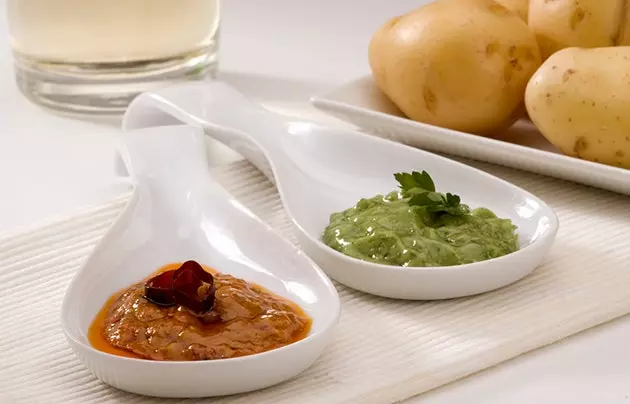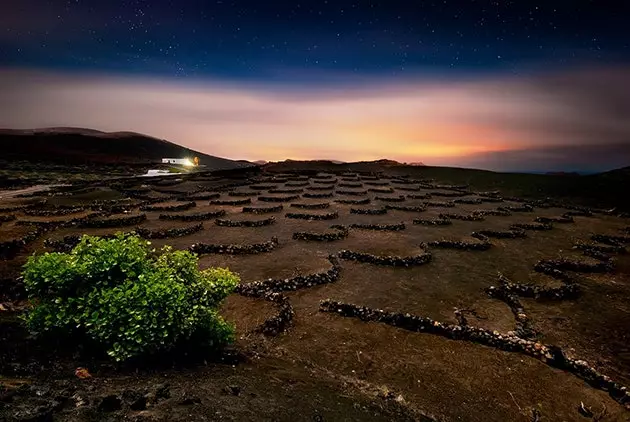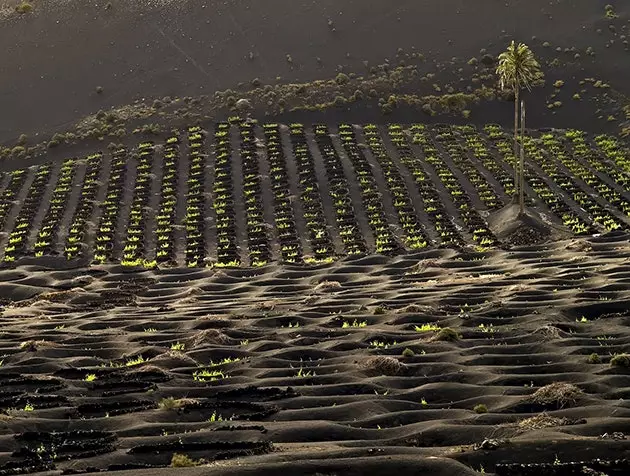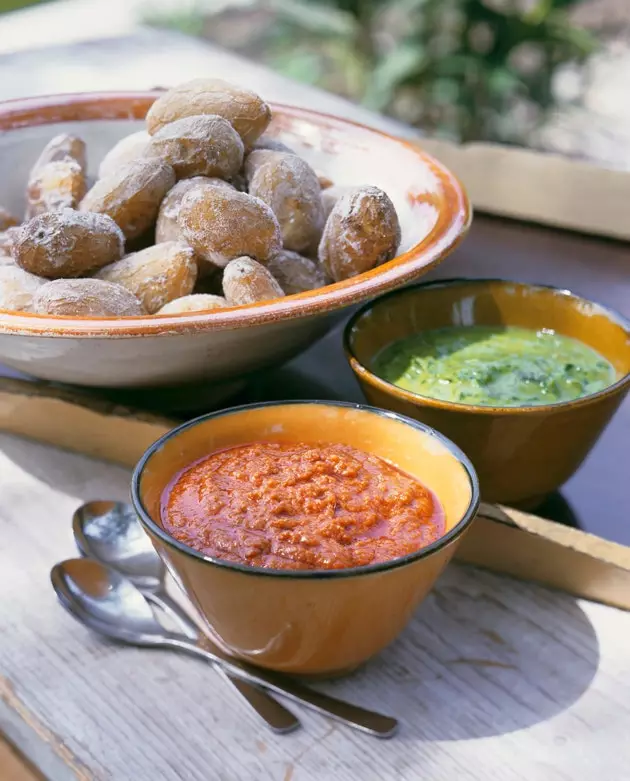
Long live the canary spread!
It is one of the least explored treasures of Spanish wine, with ten denominations of origin and a rich mosaic of soils, microclimates and native varieties that give rise to a diverse panorama of reds, whites and unique sweets. Due precisely to this diversity, the fragmentation in many D.O. makes it difficult to identify and market Canarian wines .
In Lanzarote , the vines add a note of color, of life, to the black picón, the soil of ash and volcanic sand ( lapilli ), in which island farmers plant vines, protected from the wind by a half circle of volcanic rocks. This is how an absolutely original agricultural landscape emerges: the geria . The production area includes the municipalities of jar, Yaiza, San Bartolome, Would do Y Teguise , all under the D.O. Lancelot.
In Tenerife , with five appellations of origin ( Tacoronte-Acentej either, Guimar Valley, Orotava Valley, Ycoden-Daute-Isora Y Pay ), you should not leave the island without trying native varieties –pre-phylloxera–, such as the black listán, the negramoll, the black slimy or the malvasia, with which interesting wines are made. On La Palma, with D.O. own, also the vineyard models the landscape, and the malvasia gives rise to delicious sweet wines. The iron Y La Gomera have their own denomination, the same as the Gran Canaria wines .

Lanzarote: pure ES-PE-TÁ-CU-LO
That unusual lunar landscape of Lanzarote has created one of the most peculiar wine regions in the world . The crops in the interior of the island, covered by lava and volcanic ash after the last eruption of Timanfaya in 1730 , make up a spectacular landscape of vines, which are planted in holes and fenced with small walls to protect them from the trade winds.
The scarcity of water and the conditions of this unique land require special care in the cultivation and production of wines , in which the flavor and minerality stand out. In Cellars The Bermejos They have collected the viticultural wisdom of the island and produce a careful range of wines, including Malvasia (sparkling, dry, sweet and semi-sweet), Moscatel, Diego (dry and organic dry) and Listán (red, rosé and sparkling).

A toast from Lanzarote
From the island of La Palma comes the well-known mojo palmero , a sauce obtained from peppers through a process of drying and rehydration, and then mixed with garlic, cumin, oil, vinegar and salt. In Virginia Products , they make them following the original recipe of the island and treating all the ingredients in an artisanal way. There are three varieties: the spicy mojo (the hottest, with sweet pepper and 'picona'), the green mojo (ideal to accompany fish, seasoned with green pepper) and the mild mojo (lighter, with sweet pepper) .
_* Published in the Condé Nas Traveler Gastronomic Guide 2015, it is now on sale in digital format at Zinio and Apple. _ You can also download the application for Android and on the App Store completely free of charge and start diving into the Spanish gastro map.
*** You may also be interested in...**
- 46 things you have to do in the Canary Islands once in your life
- Postcards from Mount Teide
- The Canary Islands in five basic dishes - The definitive foodie application: we launched the 2015 Gastronomic Guide App
- The photos that will make you want to move to the Canary Islands
- The ten most beautiful villages in the Canary Islands
- Typical Canarian dishes
- 46 things to do in the Canary Islands once in a lifetime
- All the articles of Arantxa Neyra

Crumbled potatoes with mojo
